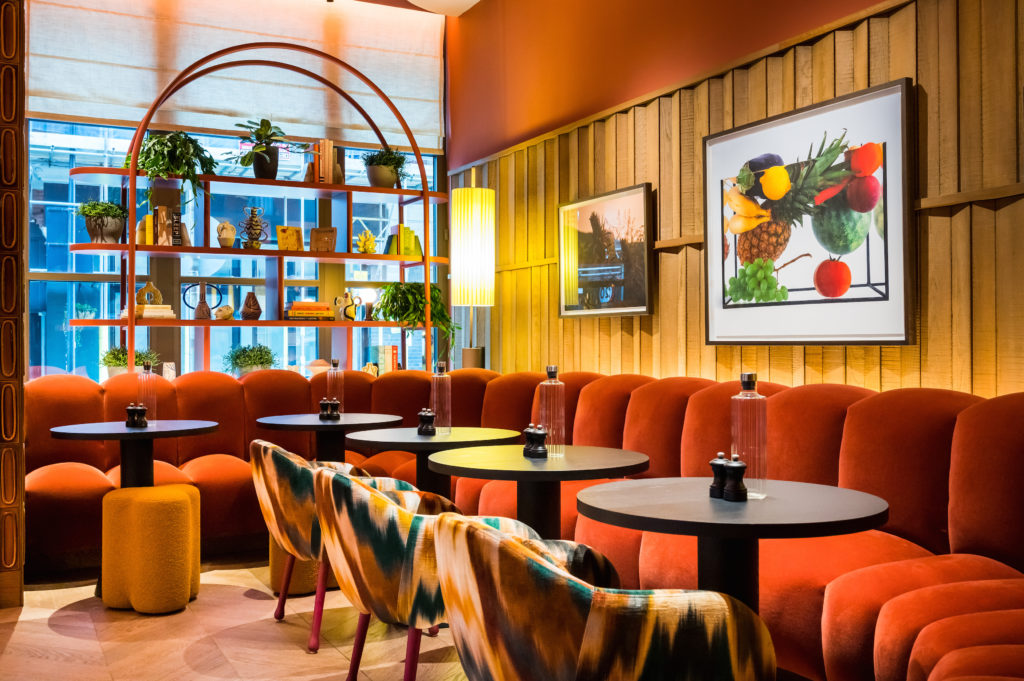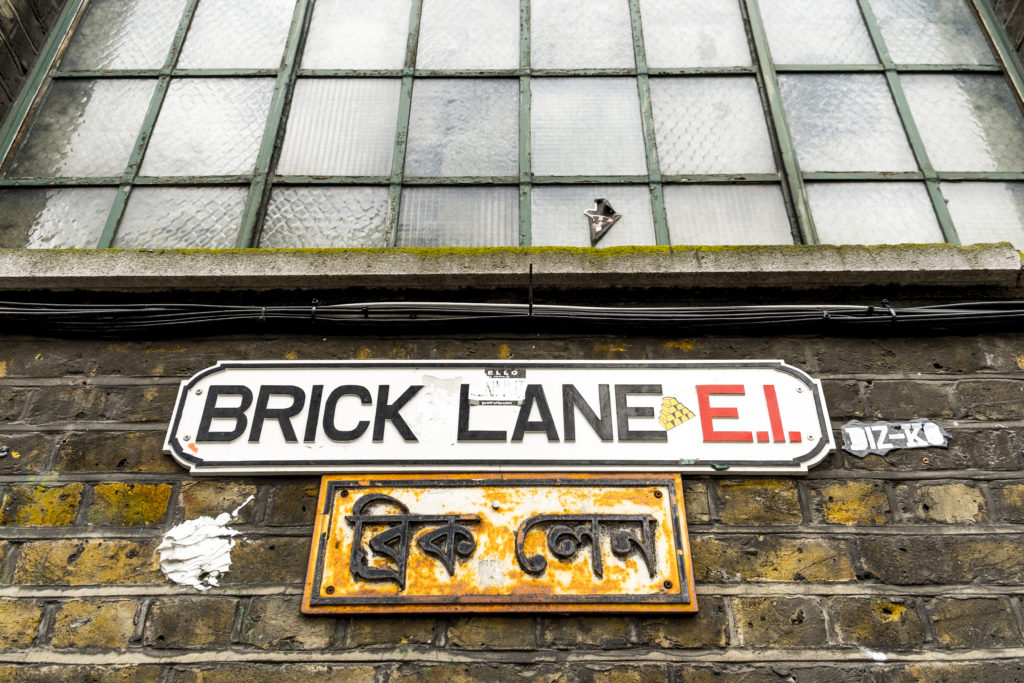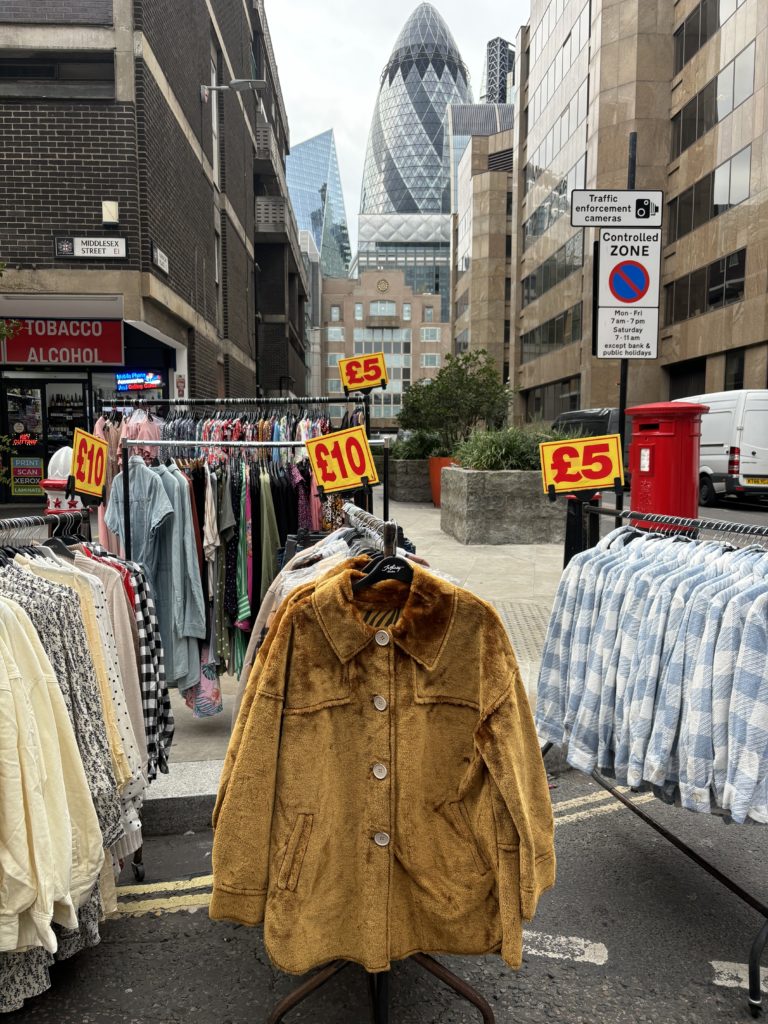WE like nothing more than exploring the city of London.
At any time of year, you can find us there seeking out the nooks and crannies of the capital which we have yet to discover.
In a city this size – it has a population of around nine million people, stretched across 32 boroughs – there is always something happening, a new place to visit or an old place to explore.
And with three children in our house there is no shortage of requests for “something to do” and suggestions as to where they would like to go next.
A trip to the capital is always a popular choice, especially when we book a hotel and make a minibreak out of it.
Over the years various school projects have seen us seek out Pudding Lane, for Fire of London insights, Westminster, for a first-hand look at some of the country’s iconic landmarks, and Covent Garden for its historic flower market and the excellent Transport Museum.
Our most recent sojourn in the city landed us in its cool yet vibrant East End.
We were seeking an alternative view of the capital, away from the usual tourist attractions.
This multicultural hotspot seemed the perfect place to start, and we found the ideal hotel from which to base our adventure.
 The newly-opened Wilde London Liverpool Street is perfectly positioned in buzzy east London
The newly-opened Wilde London Liverpool Street is perfectly positioned in buzzy east LondonI say hotel, but I mean aparthotel.
For those unaware, this enticing, relatively new concept provides the best bits of hotel living with all the comfort and flexibility of home.
Wilde London Liverpool Street opened last month.
It’s the latest luxury offering from the Dublin-headquartered Staycity Group, which operates aparthotels across Europe.
The Irish firm describes its venues as “half apartment, half hotel” and that’s exactly what they are.
Our rooms came complete with huge beds, luxurious towels and crisp, fresh linen.
So far, so hotel.
But tucked around the corner of the vast bedroom space was a cleverly positioned kitchen.
In true apartment style, this had a fridge, hob and microwave, as well as cupboards full of crockery and ample room to cook and prepare food if you should wish.
So, there you have it, half hotel and half apartment at its very best.
You could simply check in, unpack and self-cater.
If you don’t fancy cooking you can order food from the hotel or get yourself a takeaway.
Or you could invite your pals over for dinner (they allow that too) and get them to bring the takeaway.
 Sit back and relax in London's newest Wilde Aparthotel
Sit back and relax in London's newest Wilde AparthotelWhatever your preference, Wilde Hotels want you to treat the place as your own.
So, while they are happy to serve you food and drinks in their super-cosy lounge, they will also happily wave at you as you head straight pass the well-stocked bar to their on-site shop to buy your own supplies.
Situated less than a ten-minute walk from Liverpool Street station, this particular Wilde Aparthotel opening is exciting for a number of reasons.
Firstly, it launches the firm’s new-look branding and design concept – which fuses a warm and welcoming colour scheme with trinkets, artworks and ornaments that are entirely locally sourced.
It’s the right mix of chic and comfort, and our kids will testify to this.
They were in awe of the lush yet laidback environment when we first entered the hotel.
Within seconds they flopped themselves on the lounge sofas and removed their shoes.
They felt right at home, and they were not afraid to show it.
What’s also rather enticing here is that the aparthotel is brand new, so new that you can still smell the newness.
The freshness is right there in the corridors, in the bounce of the sofas and in the crispness of the bed sheets.
But mainly, what was exciting here for us was the location.
Wilde London Liverpool Street is located smack bang in the middle of the buzziest part of east London.
You can leave the main entrance and walk to Shoreditch in ten minutes and Spitalfields in only five, and there is plenty to savour in between.
On Sunday mornings you don’t even have to leave the entrance to get in on the local action as the building is on Middlesex Street, which is the location of the weekly Petticoat Lane Market.
This historic clothing and textile market is believed to be one of the oldest still operating in London, and it still does a roaring trade.
By the time you’ve had your coffee and stepped out that morning you will find throngs of people who were up and out way before you looking for their next bargain.
 Shop for a bargain in Spitalfields Market
Shop for a bargain in Spitalfields MarketA slow wander through those stalls will take you to Spitalfields, which is one of the liveliest areas you can find in the capital.
And it also one of the most significant historically, in terms of the culture and people who make the area what it is.
Traditionally, Spitalfields was the place which attracted newly arrived migrants who had found their way to London in search of work, safety or both.
From the 16th to 18th centuries the area welcomed large numbers of Huguenot refugees, who were fleeing persecution in France.
In the 1800s it was the Irish who arrived in their droves, seeking work and better prospects following the devastation of the Great Famine back home.
Later years brought the Ashkenazi Jews and in the 20th century the area became a centre for Bengali immigrants.
All of these waves of immigration have contributed to the area as it stands today.
These communities stayed, they put down roots and they shared the best of their cultures with one another.
They effectively created an East End superculture – which is the combined power of all of these peoples and how they have co-existed so beautifully together.
You can find that in the curry houses of Brick Lane, the street art around the Truman Brewery, in the market traders that turn up day in, day out and in the churches, chapels, synagogues and mosques that still stand strong throughout the area.
 Brick Lane is an historic cultural melting pot
Brick Lane is an historic cultural melting potToday, passing through those streets, you find yourself immersed in all of those cultures and more and that makes this part of London an ideal place for a family trip.
However, this is not an area for a quick visit.
No to truly experience it, you need to walk slowly, with your eyes up – not stuck on your phone - as you never know what you are going to find around any given corner.
Old markets are flanked by the skyscrapers of London’s financial district, modern artisan wares are sold from antiquated stalls and everywhere you look time-tested traditions are preserved by generations new.
You really should go and see it for yourself.
Luckily the East End has always been an area that welcomed outsiders.
Now, with a pretty epic aparthotel right on its doorstep, there’s a place for us all to stay too.
For information and bookings at Wilde London Liverpool Street click here.
Five family-friendly attractions to enjoy in East London…
Brick Lane
 Soak up the culture in Brick Lane (Pic: Getty)
Soak up the culture in Brick Lane (Pic: Getty)Brick Lane has been a place of arrival and settlement for migrants from all parts of the globe for centuries.
It’s still well worth a visit today.
Running from Bethnal Green to Whitechapel there are captivating views to behold every step of the way.
From vintage fashion boutiques to authentic curry houses and tasty street food spots there is plenty to explore here.
Go along, with time to spare, as once you get here you will not want to leave.
Spitalfields City Farm
 Spitalfields City Farm (Pic: F Audley)
Spitalfields City Farm (Pic: F Audley)Tucked away behind the hustle and bustle of Brick Lane is Spitalfields City Farm.
Free to visit and oozing with charm, this local landmark is dedicated to giving back to its community.
The organisation works with its neighbours to provide educational opportunities for children and adults alike, to empower people to gain new skills and to combat social isolation.
The farm was started in 1978 in response to local people’s demand for allotments, having lost theirs to developers.
With a long east end tradition of backyard farming, it wasn’t long before chickens, rabbits and geese appeared on the scene too.
Now there are donkeys, sheep, goats and much more to enjoy, as well as outdoor spaces, polytunnels and greenhouses which the farm uses to teach people how to grow food.
Petticoat Lane Market
 Old meets new along Petticoat Lane Market (Pic: F Audley)
Old meets new along Petticoat Lane Market (Pic: F Audley)This historic fashion, textiles and clothing market is open six days a week on Wentworth Street and on Sundays only in Middlesex Street.
In Tudor times Middlesex Street was known as Hogs Lane. It was lined by hedgerows and elm trees and is thought city bakers were allowed to keep their pigs in the lane, outside the city wall.
By the 1600s the lane had become a commercial district and was the place where clothes, textiles and second-hand goods were sold.
The market remained over the eyars and was the place where celebrity businessman Sir Alan Sugar first started out as a market stall trader.
Young V&A
Located in Bethnal Green, the Young V&A is free to visit and is a day out in itself.
It only opened last year, but has proved itself a popular addition to the capital’s attractions, offering the best of child-friendly culture and creativity.
Its ineractive throughout, inviting its young guests – and us big ones too – to truly experience the art and installations.
If you are east London with children you simply must pay a visit.
Go with and open mind and be prepared to experience art and the creative world through play, design and imagination.
Old Spitalfields Market
 Old Spitalfields Market is open seven days a week (Pic: Getty)
Old Spitalfields Market is open seven days a week (Pic: Getty)One of London’s oldest markets, Spitalfields Market is a seven-days-a-week destination.
It boasts an array of independent stall holders, showcasing incredible hand-crafted and hard-to-find pieces that you would struggle to find anywhere else.
Among the highlights of the market are its cutting-edge fashion, unique interiors and original artworks, but also its huge foodie offering.
There is incredible quality and variety in the street food dishes available at the market – making it a prime choice for many of the people working in the city’s nearby financial district on their lunch breaks, who come back again and again.

